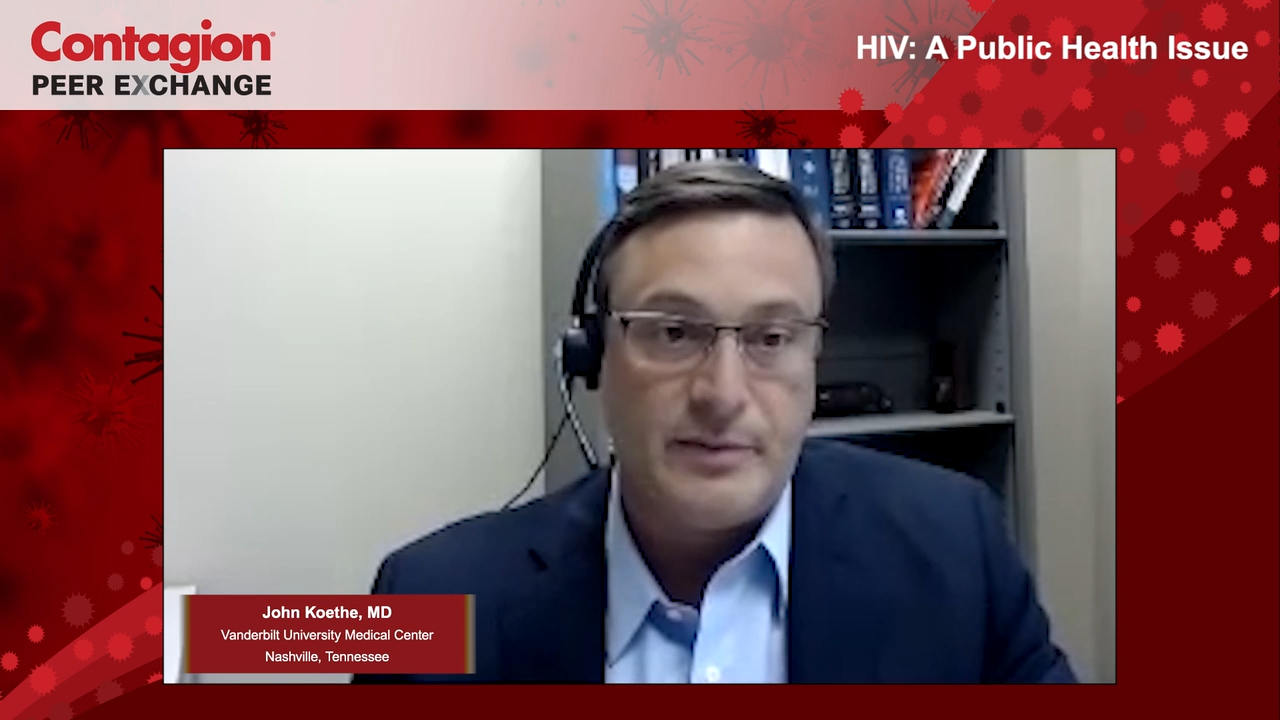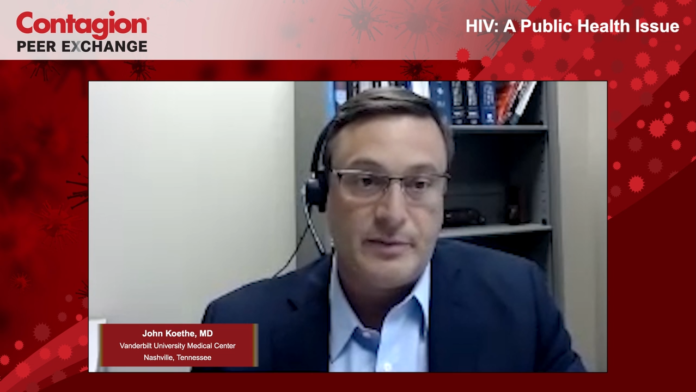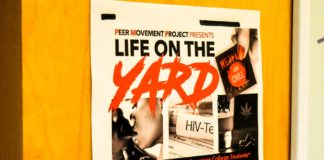
Grace McComsey, MD, FIDSA: Hello and welcome to this ContagionLive® Peer Exchange titled, “Multidisciplinary Perspectives on the Effective Therapeutic Approaches and Quality of Life Considerations in the Management of HIV.” I am Dr Grace McComsey, professor of pediatrics and medicine at Case Western Reserve University in Cleveland, Ohio. Joining me today in this discussion are my colleagues: Dr Todd Brown, endocrinologist and professor of medicine at the Johns Hopkins School of Medicine in Baltimore; also Dr Osama Hamdy, endocrinologist as well and associate professor of medicine at Harvard [University, Boston, Massachusetts]; Dr Tavell Kindall, infectious disease specialist at the St. Thomas Community Health Center in New Orleans, [Louisiana]; and Dr John Koethe, associate professor of medicine in the Division of Infectious Disease at Vanderbilt University Medical Center in Nashville, [Tennessee].
Thank you for being here for this discussion. Today we will focus on how HIV can affect a patient’s quality of life, something we don’t talk about very often, and ways in which it can be managed. We have these expert multidisciplinary panelists who will help me with putting into perspective all these issues and talk about the optimal treatment that keeps in mind adverse events as well as the quality of life of our patients. Let’s first talk about where we are with HIV now in the United States. What is the annual incidence and prevalence, at least what we know from the CDC [Centers for Disease Control and Prevention]? The last update was in 2019. John, do you want to give us an idea of where we are with incidence and prevalence in the US [United States]?
John Koethe, MD: Yes. Thanks, Grace. It’s important to set the stage and talk about where we are today and where we’ve come over the last 40 years of this epidemic. It’s also important to look at the patients who are coming into the system, in addition to those who have been on long-term treatment, because it sets the stage for both the challenges we face with our new patients and then also caring for those on long-term therapy. But at present, there are approximately 1.2 million people in the United States who have HIV, and that’s an estimated number, because approximately 15% of those are thought to be unaware of their diagnosis. As you mentioned, 2019 is some of our most recent data, and in 2019 it was estimated there were approximately 35,000 new HIV infections that occurred in the United States, a very high number, but we should also recognize that’s a decrease of approximately two-thirds from the height of the epidemic in the mid-1980s. Now, unfortunately while we’ve seen this decline in new incidence, we have seen a leveling off, somewhere in the 30,000, 35,000 range, which seems to have persisted despite all the public health efforts. We should also keep in mind that the total prevalence is growing in the US because people are surviving longer on therapy; we’re adding new infections, but we also have an aging population as well.
When we look at the epidemic, we have to consider that there are 2 groups to consider. One, there are patients on long-term treatment. As of approximately 3 years ago, more than 50% of the people with diagnosed HIV in the United States and on treatment are over the age of 50, so it’s an aging population. But those most at risk also frequently fall into groups that might be marginalized or disadvantaged in our society anyway, and that affects how we approach this topic as provider of care. Gay, bisexual, and other men who have sex with men, or MSM, are the population that are still at highest risk of new HIV diagnoses and constitute approximately 70% of all new diagnoses. Transgender individuals make up approximately 2% of new diagnoses, which is far larger than their representation in the general population, making these individuals a very high-risk group as well. Lastly, Black individuals make up only 13% of the US population, but account for 44% or nearly half of all new HIV infections. Many of them are among MSM, but there’s also a large number of Black women who are newly diagnosed with HIV, which represents an often under-recognized component of the epidemic, and again, one that has recently been growing.
Lastly, Hispanics or Latinx individuals represent about 18% of the US population, but 30% of new diagnoses. These are all groups that may have had historically different interactions with the US health care system, may not have the same access to care, or may have other barriers to accessing care, all of which must be considered given that this is the largest group of individuals coming into the health care system right now. This raises the role of how do we approach public health in HIV prevention from a manner that’s personalized or individualized to these high-risk groups, and then additionally, how do we approach guiding individuals through the early stages of care?
Grace McComsey, MD, FIDSA: Very good points. One thing you mentioned, our aging population. Obviously, that’s a huge problem we have in dealing with HIV. How about new cases? Are we seeing new infections in the aging population? If you think 65 and older, are we seeing new HIV infections in this population?
John Koethe, MD: Yes, we are. We’re continuing to see new infections across the age distribution. But when we look at the preponderance of the individuals who are newly diagnosed, it frequently is in the younger age groups. Unfortunately there are 2 aspects to this. One is there is a lack of public health messages reaching a lot of individuals, particularly in the 20- and 30-year-old age range, also among individuals who would fall in the MSM categories. Additionally, there is, unfortunately some sense that HIV is becoming something of a treatable disease, which of course it is, but yet it is a disease requiring lifelong treatment, and we’re still working through how to treat these individuals best. I am concerned that, one, we may have issues of public health avoidance and prevention, failing to reach the key demographic categories, but also a misunderstanding of where we stand in the HIV field at present. But you are correct, though, that we are seeing continued infections in all age groups. And while they are concentrated in the younger individuals, we continue to see a relatively good proportion of new infections occurring in the over 50 and even over 60 age group, some of this, again driven by a lack of awareness of HIV transmission in the community.
Grace McComsey, MD, FIDSA: Right, and partly probably physicians don’t think about HIV in that group.
Thank you for watching this ContagionLive® Peer Exchange. If you enjoyed the content, please subscribe to the e-newsletter so you can receive upcoming Peer Exchanges and other great content. Thank you for listening.
Transcript Edited for Clarity








